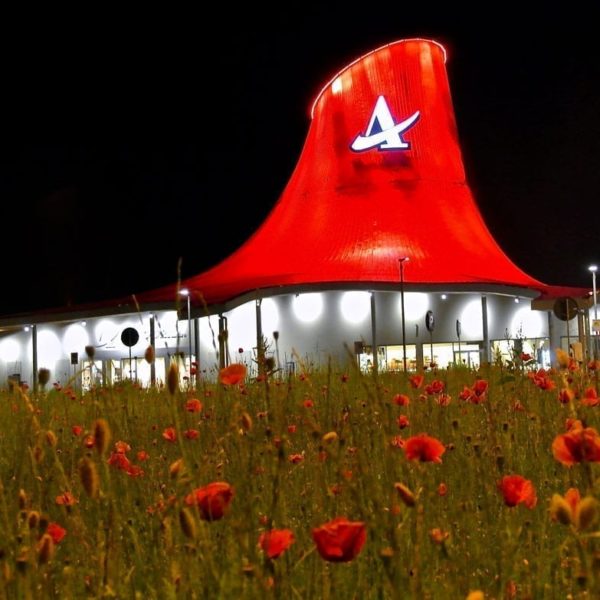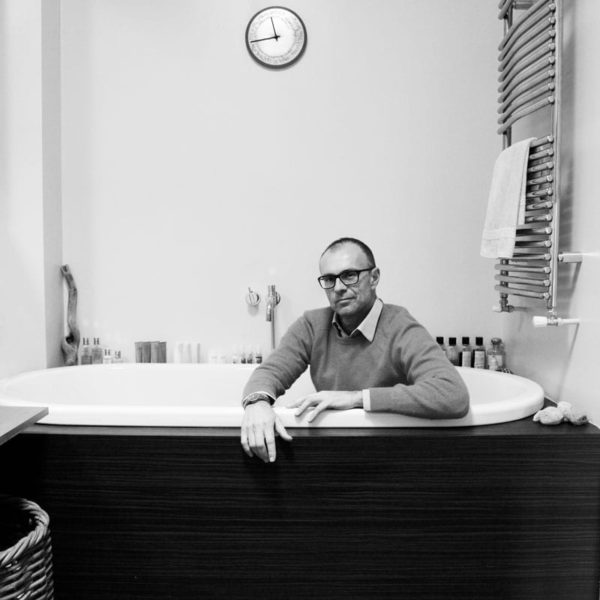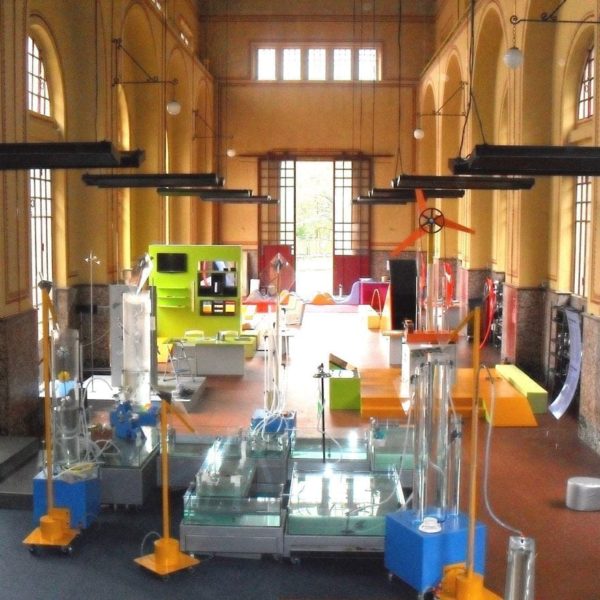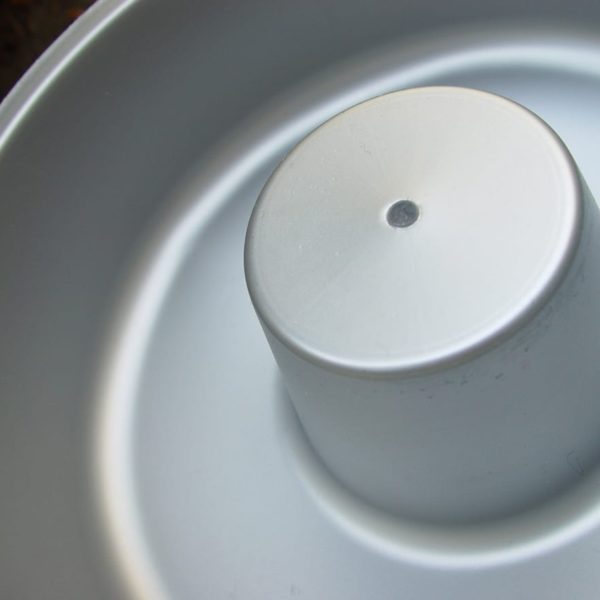Interviews

Hybridisation, from the spoon to the city | by Alessandra Coppa
The founder of the design group Total Tool (a name that brings to mind the legendary “Global Tools” collective founded in early 1973 in the editorial offices of Casabella, at the time led by Alessandro Mendini and including professionals such as Remo Buti, Riccardo Dalisi, Adalberto Dal Lago, Ugo La Pietra, Gaetano Pesce, Gianni Pettena and Ettore Sottsass together with groups such as Superstudio, Archizoom, Gruppo 9999, UFO and Ziggurat), Giulio Ceppi runs a practice located on floor 8 + 1 of a high-rise building opposite the new skyscraper where the Lombardy regional government has its offices. It is called floor “8 + 1” because the lift only goes as far as the eighth floor and you have to climb a further flight of stairs to get there. The loft housing the home studio was created as part of a renovation project carried out by Giulio in a building originally designed by Vittoriano Viganò. The interior houses works of art, design objects and projects in progress, and like the name of the practice fully reflects its philosophy of disciplinary interaction, hybridisation and the ambition to “go beyond”.
“Total Tool is inspired by two key principles. The first is interdisciplinarity in that it deals with design, architecture and communication in a highly integrated way without adopting a specialised approach. This is a method that stems from my training. I first studied visual communication, then architecture and then design, so my working approach involves hybridisation of design disciplines. This is particularly important because the second of the key principles is always to work on projects as part of a long-term vision rather than a mere temporary stylistic exercise. I like to think that a project is similar to constructing DNA, to creating principles and rules that acquire shape and form over time. Form based on communication, products and the spaces that are necessary for a company or organisation to be able to express its way of being and appearing.”
This transversal working method spanning various fields of design has enabled you to develop very different products that at the same time share this complexity in terms of approach. Which projects do you consider the most significant since you founded your practice in 1999?
It’s true, we rarely end up working on similar projects. That’s the great thing about our approach!
One project I really love is our work for Reggio Children. As well as writing the book Bambini, spazi, relazioni: metaprogetto di ambiente per l’infanzia (“Children, spaces, relationships: a metaproject for an environment for children”), a kind of open handbook on how to design nursery schools in sensorial terms, we created a “water and energy workshop”. This hosts five large installations where children can explore and experiment as they try to understand how a large electrical power station works, or how a mountain, a landscape or a wood can generate electrical energy. As they learn, children become more aware of the environment and nature. This is an open-ended project, a work in progress.
On the subject of materials – another theme I like a lot as it is closely related to my background at Domus Academy – another important project is the one we carried out with SVGOMMA, a small business that manufactures silicone and rubber parts for large companies. We developed a working method that would enable them to transcend their role as mere suppliers limited to formulating offers for the purchasing departments, and built a laboratory called SVGOMMALAB. Focusing our research efforts on the elastomer market, we won the 20th Compasso d’Oro award for having developed the innovative concept of silicone with metal pigment inclusions, allowing silicone to be produced with silver, gold and bronze finishes for the household, clothing or medical sectors. For SVGOMMA we then developed a large-scale project focusing on communication, new product design and competitions in collaboration with the Polytechnic. This way the project became a “process”, allowing the company to offer new product application solutions and raise its status from supplier to co-designer.
Another of the Total Tool projects I’d like to mention is the Villoresi Est Autogrill service station on the Milan-Laghi motorway, designed as a kind of complex “energy organism” with a large active roof, which we built in 2015. It is closely connected to the historic Autogrill service station on the other side of the motorway built by architect Angelo Bianchetti. Based on a complex orchestration of technical, plant engineering and architectural aspects, it is a highly innovative building in terms of energy efficiency and energy consumption and is inspired by principles of inclusiveness and a “Design for all” culture.
Returning to your love of materials, apart from silicones have you ever worked with ceramics?
I remember you took part in a very interesting conference at Cersaie last year on the theme of ceramic advertising campaigns in a thousand issues of Domus since 1928.
At the meeting with the magazine Domus I presented a project entitled “Le parole della ceramica” (“The words of ceramics”), a kind of analysis of communication based on advertising in a thousand issues of Domus, more than twenty years of history, with the aim of exploring how the Italian ceramic manufacturers’ campaigns have changed over time in response to a wide range of trends. We organised the work by creating polarities and seeing how advertising pages took on different approaches and connotations over time. For example, one polarity was “figurative-abstract”, and in this case we determined whether or not the advertising campaign used a direct representation of ceramic products and looked at how these trends have changed over the course of time. Then for example we would look the degree to which the individual product or its setting was highlighted in the communication project. The product was initially given a central position, after which the focus extended to the setting, the mood, the architecture. We saw that the narrative was initially more technical and subsequently more emotional and imaginative. In 1972 Italian ceramics was already exploring the theme of the earth, of raw materials, and was presenting ceramics in terms of a primitive emotion, prefiguring the highly contemporary idea of traceability in which Italian ceramic products differ from those of Spanish or Chinese manufacturers in terms of their material content, the earth that is used to create them. Another interesting aspect is the extent to which a company reveals its production process (by taking you inside the factory) or simply presents the finished product. As early as the 1960s some companies were already focusing on the concept of production as a source of pride. Another theme is the use of ceramics to imitate other materials such as wood or perhaps a precious stone.
As a designer, what do you think of ceramic with a wood or stone look?
It’s an aspect I’m working on right now for Target Group. The idea involves creating what I refer to as a “provocative imitative” collection (I’m not quite sure what to call it yet) that involves walking on ceramic tiles inspired by the surface of the Moon or Mars. I’ll try to explain in greater detail. What I want to do is to imitate something that in reality is unattainable, inaccessible, a kind of “true-false” concept. I proposed an “authentic imitative” product by trying to create surfaces reminiscent of the stones of the Moon and Mars (those of Mars are more ferrous and sandy, those of the Moon more metallic) based on the observations made by Galileo.
What do you think companies should focus on when developing ceramic materials?
What companies should perhaps take greater account of is the idea that ceramic is not just a “decoration” or “surface”, although this concept has inevitably become a kind of obsession. In a mature market with the Chinese on the one side and the Brazilians and Spanish on the other, it is essential to defend Italy’s supremacy in terms of quality and intelligent production. To do this, we have to be able to explain why exactly Italian ceramics are superior, to help architects, designers and consumers to understand the nature of the material, its properties and its production characteristics. I believe it’s important to learn to focus on three-dimensionality, on volume. I also think it is possible to develop integrated solutions in which ceramics are combined with other materials. I don’t believe we should think in terms of individual materials, because each material’s potential lies in its ability to dialogue with other materials as part of an intelligent integration with technology. This brings us back to the concept of hybridisation.
BIOGRAPHY
Architect and designer Giulio Ceppi studied at the Scuola Politecnica in Milan and gained his PhD from the Polytechnic University of Milan, where he has been a researcher and associate professor since 1994.
After holding visiting professorships at the Interaction Design Institute Ivrea and at the Architecture Faculties of Genoa, Turin and Rome and the Catholic University in Milan, in 2005 he founded and directed the Masters in Business Design course at Domus Academy.
His fields of interest include sensory design and materials design, as well as the development of new technologies and identity strategies.
He coordinated the Domus Academy Research Centre until 1997 and subsequently worked as a senior design consultant for Philips Design.
In 1999 he founded Total Tool, a visioning and design strategy company with offices in Milan and Buenos Aires which has received 6 nominations for the Compasso d’Oro award, a mention in the ICSID Hall of Fame, 2 victories in the Confcommercio National Innovation Award, and the Dedalo Minosse Award for “Design for all”.
He collaborates with companies including Auchan, Autogrill, Bhartyia, Coop, Deborah, Ikea, Luceplan, Mitsubishi, Nissan, Nike, PepsiCo, Pininfarina, Pirelli, SaporitiItalia, Unilever, Viacom, Versace, Vertu and 3M and organisation such as Archivio Disarmo, Municipality of Milan, European Community, Federlegno, Reggio Children and Torino 2006.
He has led workshops and conferences in more than 25 countries and written a number of essays on design and design culture.
He lives and works in Milan and at Lake Como, where he was born in 1965.








